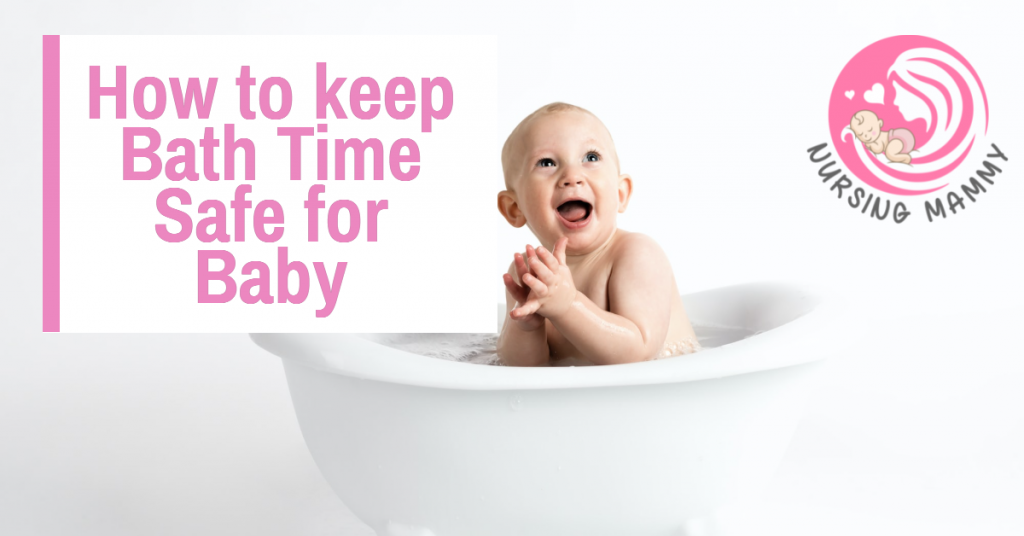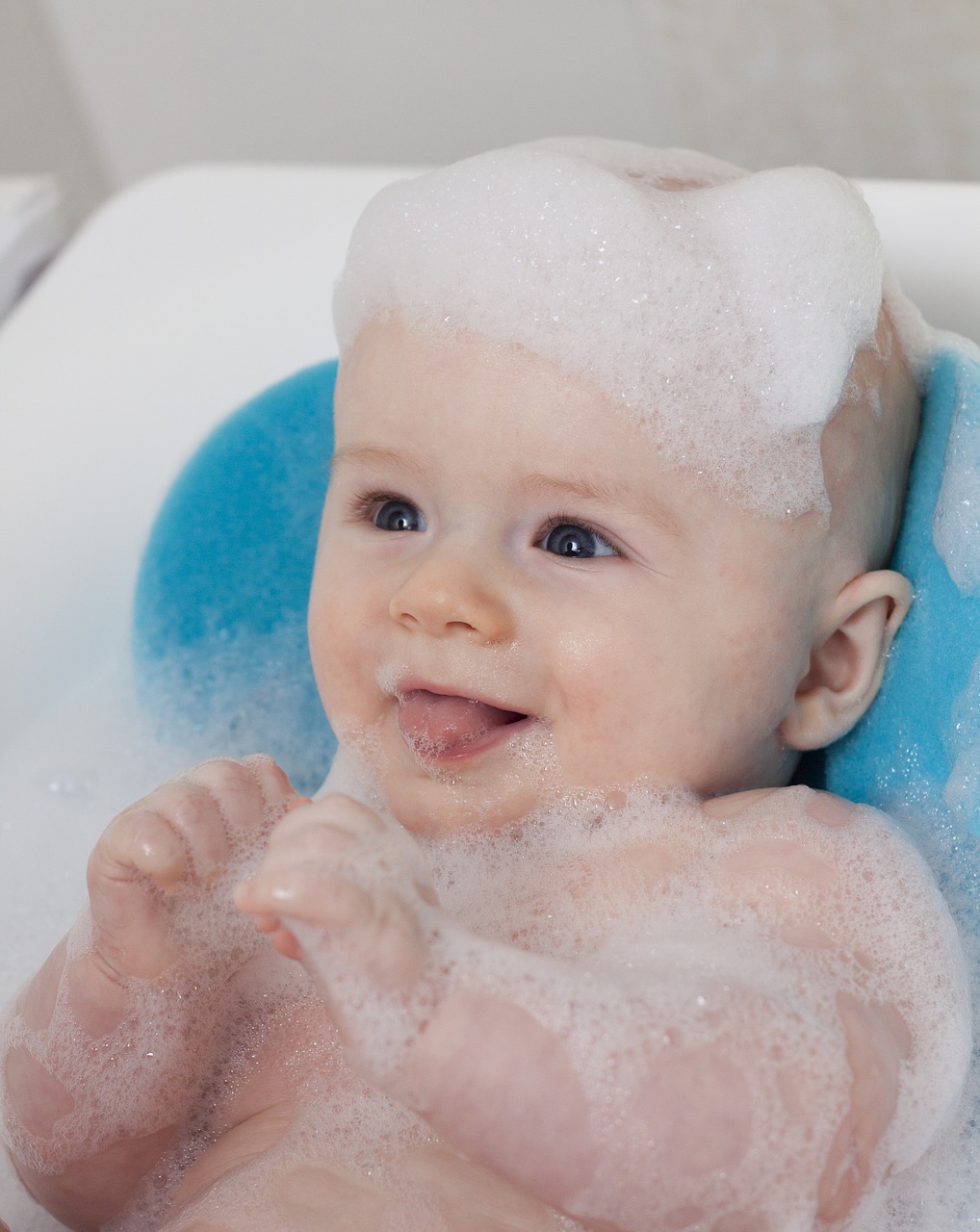This post contains affiliate links. If you click on a link and choose to make a purchase, I will receive a commission at no additional cost to you. See our affiliate disclosure page for more information.
Bath time should be an entertaining way to connect with your baby! A time where you can take part in activities that encourage development. Routine bath times can also be an excellent way to establish lines between playtime and bedtime. Yet bath time can be tedious and upsetting—especially when you’re a new parent!
In the hospital, nurses bathed your newborn. You didn’t stress out about bathing your baby. Not until you were in the comfort of your own home—but now it’s a little upsetting to think about, isn’t it? The first question you should ask yourself is if the umbilical cord has fallen off.
If you’ve answered yes, you are ready to bathe your infant! What’s one thing you’re worried about above anything thing else? We feel that the bathwater temperature is the primary concern.
The Temperature of the Water
As with most new parents, you’re concerned about scalding your baby! That’s understandable! The most essential factor about your baby’s bath is knowing that the temperature of the water is just right—that means not too hot or cold!
One way you’ll get the temperature just right is by setting your water heater’s thermostat to 120°F or below. This is to prevent scalds and burns on your baby’s delicate skin!
We want the temperature of the water to be around 98.6°F (just between 37°C and 38°C). It’s okay if the temperature is a few levels above or below this. But we want to make sure that we keep the temperature well below that 120°F (49°C).
This means that the bathwater will be safe and comfortable! If you’re concerned about scalding your baby, you can purchase anti-scalding devices and install them on taps and showers.
We know what the correct temperature is, but how do we regulate it? There are a few techniques you can use to test the temperature of your baby’s bathwater. These techniques are fairly simple and won’t cause you any trouble.
You can use a thermometer, and there are baby baths with these built-in. A Thermometer can give you an exact reading. However, they are pricey and pointless!
The second technique is just as simple and you don’t waste a penny! It’s easy to do, and just as accurate as a thermometer. First, you run the cold water, adding hot as you continue. Then you slip your wrist or elbow into the water and churn it around to establish that the temperature is even.
By using these delicate parts of your own body, you can assure yourself that the water isn’t too hot for your baby!
See also: Best Mini Fridges for Breast Milk
Keeping Baby Warm
That’s easy and very simple. We want to choose a small room and have the temperature be moderately warm. We also don’t want bath time to be overly long! By achieving this, the bathwater won’t cool down and make your infant cold.
What to do if the Water Cooled Down to Soon
Most times, this won’t happen unless you’ve made bath time too long for the baby.
If this happens, remove your infant from the water. Swaddle them in a towel, before placing them in a safe place like the crib. Then add more hot water to the bath.
We don’t want to add more water with your baby in the bath.
This could scald your baby—something we wish to avoid!
Alternative Measures to Keep your Newborn Warm.
Choosing a small room and running a space heater to increase heat is the most practical. Be sure to keep all doors and windows closed to keep the room as warm as possible.
You should also be certain that you have all the required items at your fingertips! This is so you don’t have to interrupt the baby’s bath time! You should bathe your baby in a small area. Such as a sink, basin, or baby bath. Fill this with water and monitor the temperature.
Always be sure you’ve warmed the towels and baby clothes in the dryer—this makes the baby nice and warm after their bath! Another measure we can take is to cover the parts of your baby that you’re not washing with a washcloth or towel.
Remember, if the room is too cool for you, it’s too cool for your baby! It might be a good idea to give them a sponge bath instead.
After your baby’s bath, swaddle them in a warmed towel and be sure to protect their head with the hood! All babies lose a tremendous amount of heat from the top of their heads.
See also: Best Mini Cribs for Tight Spaces
Length and Amount
Did you know that warm water can irritate a newborn’s skin? Your baby’s bath should only last about 5-10 minutes. That way, your little one isn’t in the water or exposed to chilly air too long!
You should also fill the bath with about 2 inches of water. This is for your little one’s safety. You may wish to add more water to cover your baby’s shoulders to keep them warmer!
Did you know your baby can slip and slide in the bath? Because of this, you should always keep a solid but comfortable grip on your baby! Please never leave your baby unattended in the bath for any length of time because babies have drowned in less than 1 inch of water!
Frequency
Did you know babies have essential oils on their skin? As a result, bathing a baby too often can dry out their skin! The recommended bath time for your baby is 2-3 times a week. We recommend sponge baths the rest of the time.
What if my Baby Has a Fever?
Sometimes your little bundle of joy will develop a fever, and you must deal with this fever immediately! There are a couple of alternatives to this. The initial and most frequent measure to break a fever is to give your baby a tepid bath.
We want the temperature of your baby’s bath to be around 90 to 95°F. But what do you do if you are not comfortable giving your baby a tepid bath? Well, that’s easy. You give your baby a ten-minute sponge bath instead! Be sure to swaddle your baby in a warm towel if they shiver.
See also: Best Baby Carriers
FAQ
What temperature should I have my water heater at?
We’d like you to keep your water heater’s thermostat setting to 120°F (49°C) or below. This will not merely prevent scalds and burns on babies, but on children and adults too.
What temperature should I keep my infant’s bathwater?
We’d like to keep your baby’s bathwater around 98.6°F (around 37°C and 38°C). We can give or take a few degrees, but maintaining it much lower than 120°F (49°C) will assure you don’t scald your baby.
My child has a fever. What should the temperature of the bathwater be?
We want to maintain a temperature of around 90 to 95°F (32.2°C and 35°C). The bath water temperature for the baby should be no warmer or cooler than this suggestion.
Not comfortable bathing your baby when they have a fever? A twenty-minute sponge bath will work. Be sure to swaddle your baby in a warmed towel if they shiver.
How do I check the temperature of my baby’s bathwater?
You may use a thermometer or check the temperature with your wrist or elbow. With these being the most delicate areas of your body, you will tell if the water is too hot for your baby. Be certain to churn the water around to make sure the temperature is even.
How do I keep my baby warm during bath time?
You should be certain to use a small, well-heated room with all doors and windows closed. If the temperature is still too frigid, you should consider giving your baby a sponge bath instead. Make sure you have supplies at your fingertips for easy access.
Be sure you use a small sink, basin, or baby bath, and check the water before placing your baby in it. Don’t forget to cover the baby’s parts you’re not washing with a towel or washcloth. Remember to swaddle your baby in a warmed towel and cover the baby’s head. You should also pat the baby dry and dress them quickly to prevent chill. This is an excellent way to keep them toasty warm.
How long do I bathe my baby for?
We recommend only 5-10 minutes.
How much water do I put in my baby’s bath?
We recommend only 2 inches of water.
Can I leave my child unattended in the bath?
No. Babies have drowned in less than 1 inch of water. Never leave your baby alone for any period—not even a split second. You should also keep hold of your infant the entire time they are in the bath.
How many times a week do I bathe my baby?
Babies have essential oils in their skin, and bathing them too often can dry out their skin. Only bathe your baby 2-3 times a week.
On days I don’t bathe my baby, can I give them a sponge bath?
Yes. We suggest that on days you don’t bathe your baby to give them a sponge bath. You may also give your infant a brief bath if the baby has a blowout.
Wrap up
Have we resolved your fears? These tips should help you feel more comfortable about the security and comfort of your newborn during bath time! You might be skeptical about taking this journey, but the reward of seeing your bundle of joy laughing and splashing in the water is worth it!
Amazon and the Amazon logo are trademarks of Amazon.com, Inc, or its affiliates.
- The 6 Best Baby Bath Towels and Robes of 2022 - February 17, 2022
- The 5 Best Baby Strollers of 2022 - December 29, 2021
- Best Baby Wipe Warmers that Help with Messy Pants - December 14, 2021



![[Alone Time!] The Best Baby Play Yards of 2022 [Alone Time!] The Best Baby Play Yards of 2022](https://www.nursingmammy.com/wp-content/uploads/2021/11/Best-Baby-Play-Yard-150x150.jpg)


![[Is it SAFE for BABY?] How Long Does Breast Milk Last After Warming? [Is it SAFE for BABY?] How Long Does Breast Milk Last After Warming?](https://www.nursingmammy.com/wp-content/uploads/2021/11/How-Long-Breast-Milk-Last-150x150.jpg)
